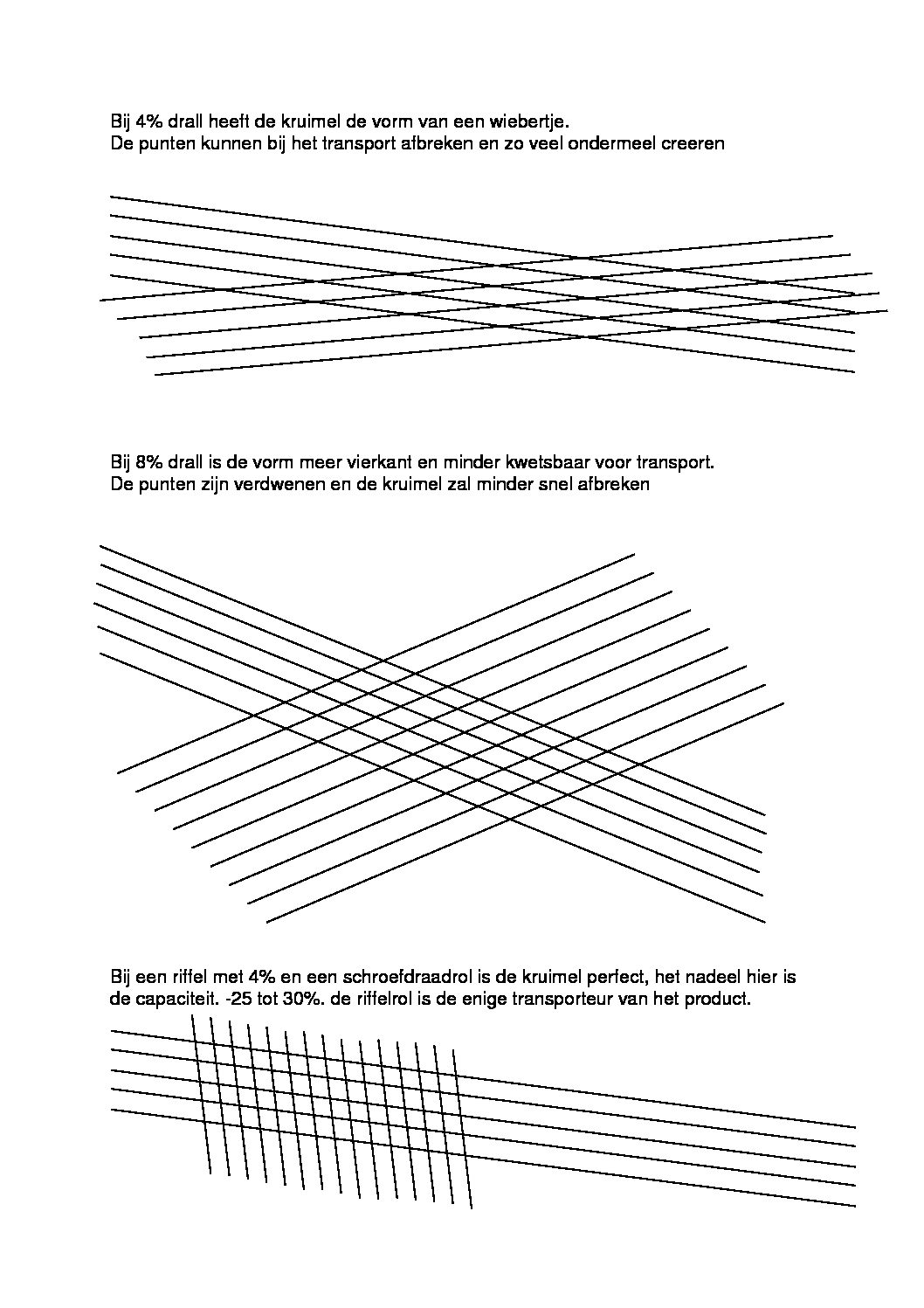All over the world, many types of roller mills are used for the grinding of various products.
The main types can be divided into three categories:
- Grain grinding for the bread industry
- granulation for other products;
- crushing/flaking.
Grains and seeds grinding for bakery raw materials.
Where in the past the grain was grind into flour in 1 millstone way, we now know a diagram of several pairs of rollers, which grind the grain into “flour”. The big difference in this principle is the separation of the bran, germs and the flour body, for example:
In the past: the whole grain was reduced to whole wheat flour in one go.
Present: the flour (150 microns) is created by means of several types of profiles and by sieving/separating and later mixed into, for example, half/whole wheat flour.
The “diagram” (the composition of the grinding line and the screen meshes) is the heart of the mill. This composition is different for every mill, it determines the quality and the extraction. Each mill keeps this diagram secret, this knowledge is not disclosed or shared with others.
Granulate other products.
Many products are suitable for this application.
Single products:
- animal feed;
- sugar;
- coffee;
- recycling;
- salt;
- dried vegetables;
- spices;
- spices.
The number of profiles and their inclination determine the quality of the granulate. The basis is based on 2 longitudinal fluted rollers with at least 8% twist and an angle of 20/60 degrees. This profile has a good quality/quantity ratio. If we tinker with the ratio, the result will be:
- increasing quality decreases quantity;
- lowering the quality increases the quantity.
A.J. te Riele Vaassen BV has the knowledge to work out your specific wishes and to give you good advice.
Flaking or crushing
The flattening or flattening takes place between rolls with a large diameter. The diameter provides a longer contact surface with the product. The large diameter also gives greater weight to the rollers. The statement reads:
Pressure x grind way = result
The higher the grinding pressure and the longer the grinding way, the result is a thinner flake. The difference in speed between the two rollers and the distance (milling cab) plays a major role here. Naturally, the input material is an important factor (natural properties, moisture and brittleness).


